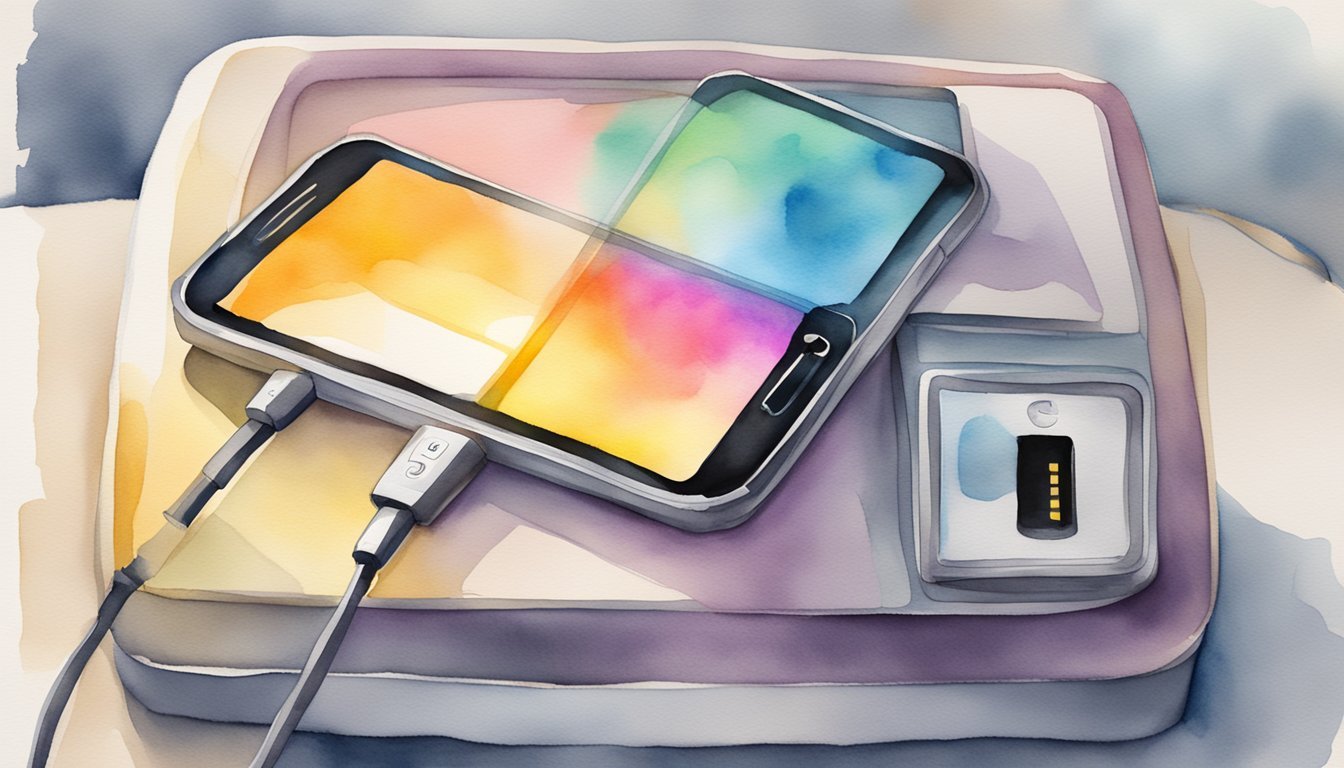Understanding Phone Battery Health
To maintain a smartphone’s battery health, it is essential to understand the nuances of modern batteries, their lifespans, and the impacts of charging practices.
Basics of Lithium-Ion Batteries
Lithium-ion batteries are the powerhouse of modern smartphones, including those made by Apple and Android devices. They offer a high energy density, meaning a lot of power in a small package, and don’t suffer from the memory effect that plagued earlier battery types. These batteries undergo voltage and current regulation thanks to a built-in circuit to keep them operating within a safe temperature range.
Battery Life and Charge Cycles
A charge cycle refers to the process of charging a lithium-ion battery to 100% and then completely running it down. Across the lifespan of a smartphone, battery capacity diminishes with each charge cycle. Manufacturers generally rate smartphone batteries for a certain number of full charge cycles, usually around 300 to 500. This doesn’t mean the battery stops working after these cycles, but there will be a noticeable decrease in the energy it can hold.
Effects of Overcharging on Battery Health
While commonly feared, overcharging a lithium-ion phone battery is not the issue it once was, as modern phones include features to prevent it from occurring. This built-in protection stops further charging when they reach 100%, eliminating the concern of overcharging damaging a phone’s battery. However, some sources suggest that keeping a phone plugged in can introduce heat, which might stress the battery over time.
Optimizing Battery Charging
To optimize battery health, one should avoid extremes in charging. For instance, don’t let the battery drop to 0% regularly and avoid charging up to 100% all the time. Features like Apple’s Optimized Battery Charging aim to learn a user’s charging patterns to reduce battery aging. Additionally, wireless charging, despite being convenient, might generate excess heat that could affect the chemical age of the battery more so than traditional charging.
By acknowledging these key points and adapting charging habits, users can extend their smartphone battery life effectively.
Managing and Preventing Overcharging Risks

In the realm of mobile technology, overcharging your phone can lead to a multitude of issues including reduced battery lifespan and safety hazards. This section delves into practical strategies to manage and prevent the risks associated with overcharging.
Identifying Overcharging Symptoms
When a phone is overcharged, it may exhibit certain symptoms indicating stress on the battery. Users should watch for signs such as the battery heating up excessively, a bulging or swollen back case, or the phone consistently losing power at a faster rate. Recognizing these unusual trends early can prevent further damage to the device.
Safety Risks and Preventive Measures
Overcharging a lithium-ion battery can elevate safety risks, including the potential for the battery to overheat, and in rare cases, cause a fire. To prevent such risks, use only official chargers and avoid leaving your phone plugged in overnight. Keeping software up to date can also optimize your phone’s battery management and prevent overcharging issues.
Choosing the Right Charging Accessories
Selecting reliable charging accessories is key to mitigating overcharging risks. Stick to buying chargers from a reliable brand and consider features such as USB power delivery for a more efficient charge. Avoid off-market chargers as they may not adhere to the same safety standards.
Maintaining Your Phone’s Battery Longevity
To extend the battery lifespan, maintain the battery level between 20% and 80%. Use airplane mode to reduce stress during charging, and limit the use of fast charging to when it’s most needed. Periodic monitoring of the charge/discharge cycles helps maintain the health of rechargeable batteries.

